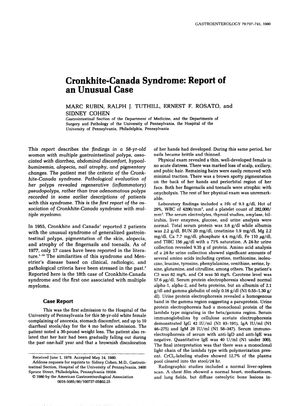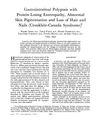Cronkhite-Canada Syndrome: Report of an Unusual Case
October 1980
in “
Gastroenterology
”

TLDR The report described a unique case of Cronkhite-Canada syndrome with unusual polyps and an association with multiple myeloma.
In 1980, a case report described the 18th instance of Cronkhite-Canada syndrome (CCS), a rare condition, in a 58-year-old female. This case was significant for being the first to associate CCS with multiple myeloma and for identifying regenerative pseudopolyps in the patient, rather than the adenomatous polyps typically linked to CCS. The patient exhibited typical CCS symptoms, including gastrointestinal polyps, diarrhea, abdominal discomfort, hypoalbuminemia, alopecia, nail atrophy, and pigmentary changes, with extensive involvement of the gastrointestinal tract and no familial history of related conditions. The findings suggested that polypoid changes in CCS might be inflammatory rather than neoplastic, highlighting the need for further research to better understand the syndrome.




